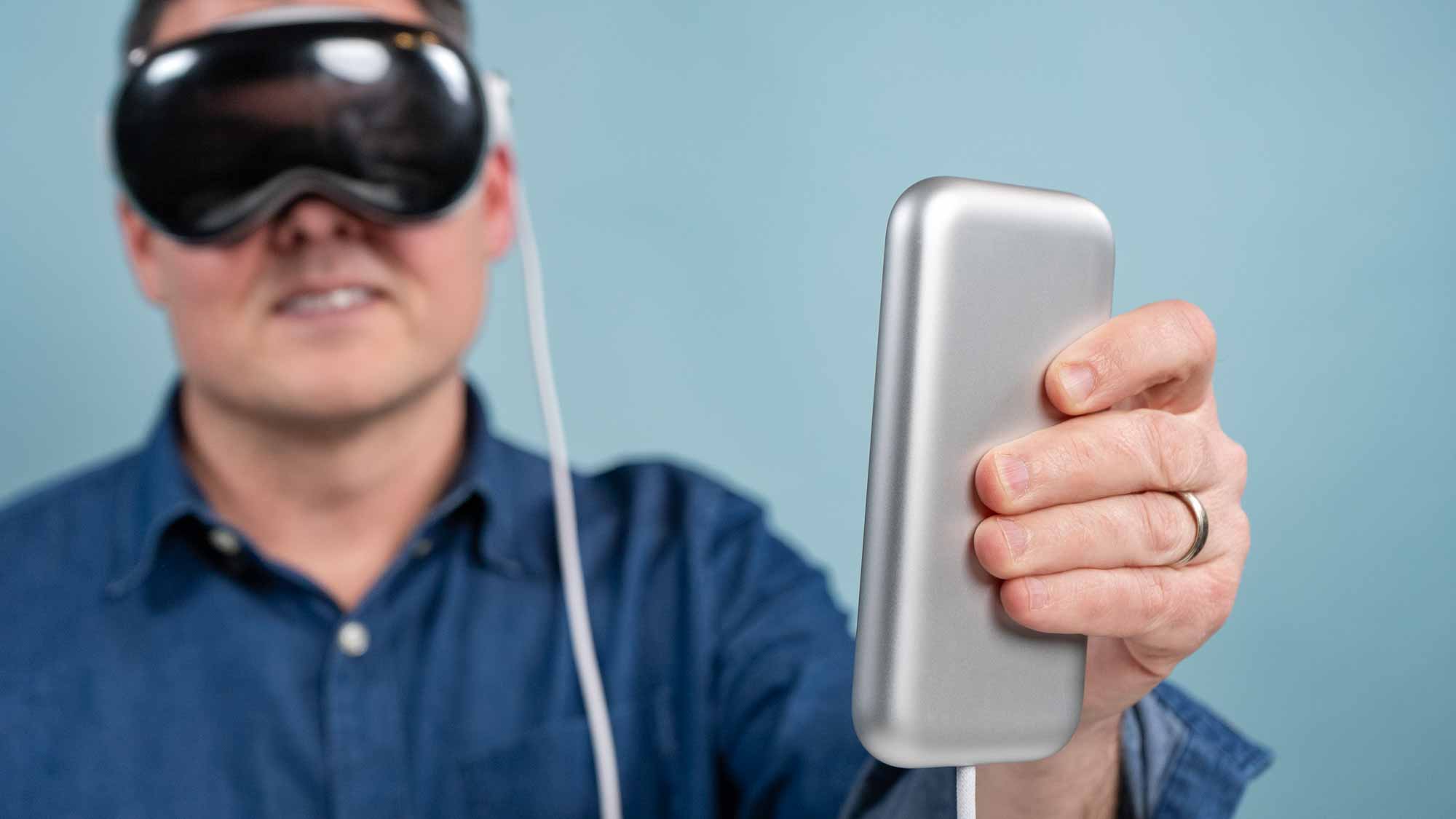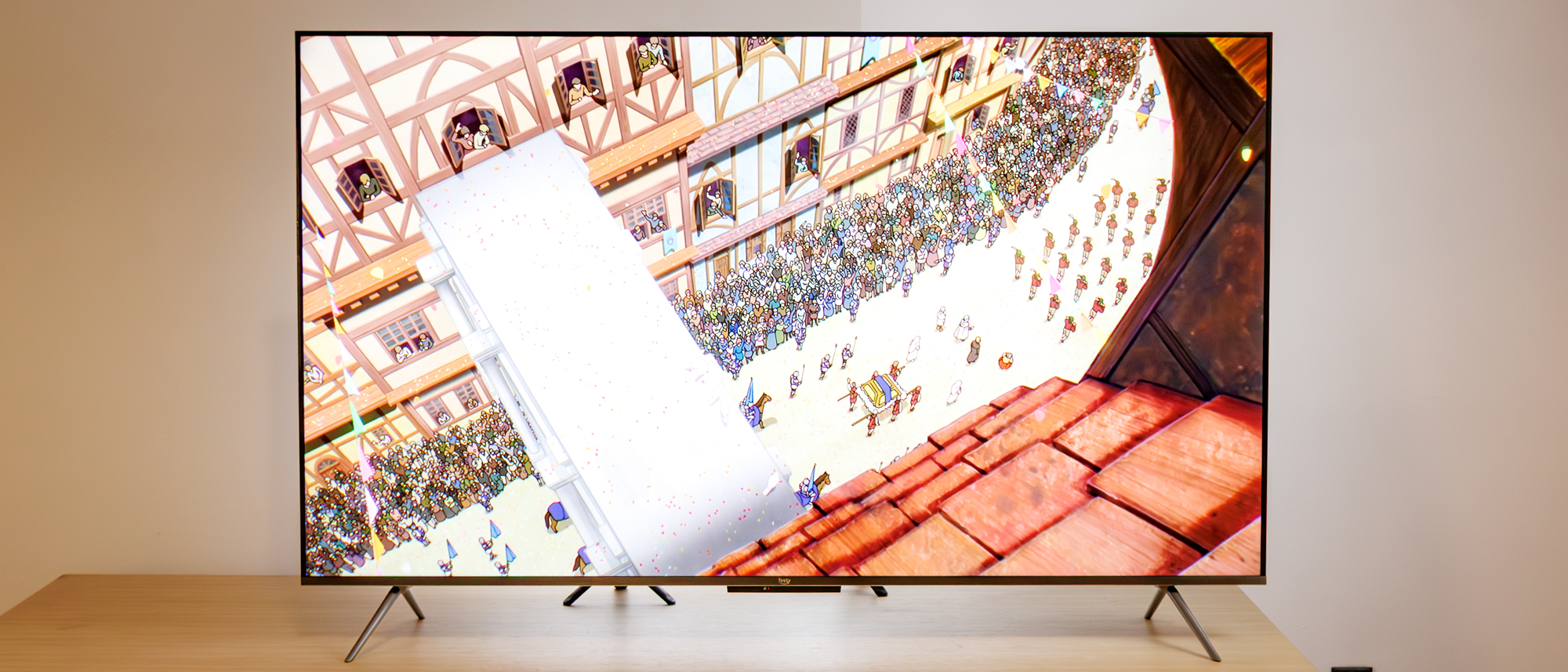Samsung Galaxy XR vs Apple Vision Pro M5: Which mixed reality headset will win?
Samsung and Apple duke it out with their latest mixed-reality headsets
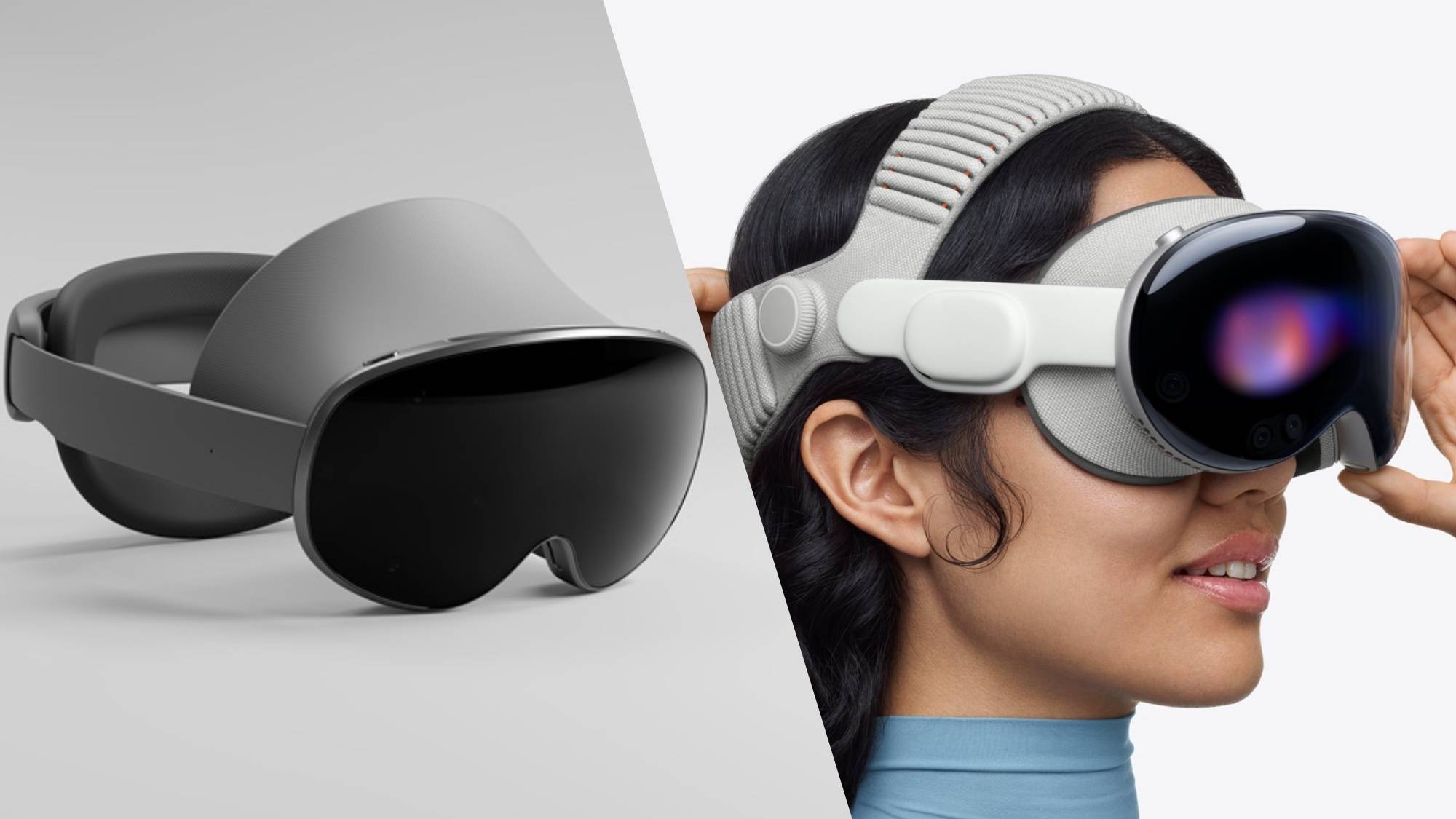
Samsung's hugely anticipated Galaxy XR headset is nearly here, set to rival the all-new Apple Vision Pro M5, and Apple could have a tough fight on its hands.
With Samsung set to hold a "Worlds Wide Open" Galaxy event all about its upcoming Android XR-based headset on October 21, we'll finally hear all there is to know about the long-teased device. Fittingly timed, seeing as the Apple Vision Pro with M5 is set to launch on October 22.
However, thanks to leaks and hands-on time with the Galaxy XR, we now have a good idea of what it will deliver and how it compares to the new Vision Pro. It's clear that the two premium headsets are set to go head-to-head, and I'm here to break down what we know about both devices to find out which will come out on top.
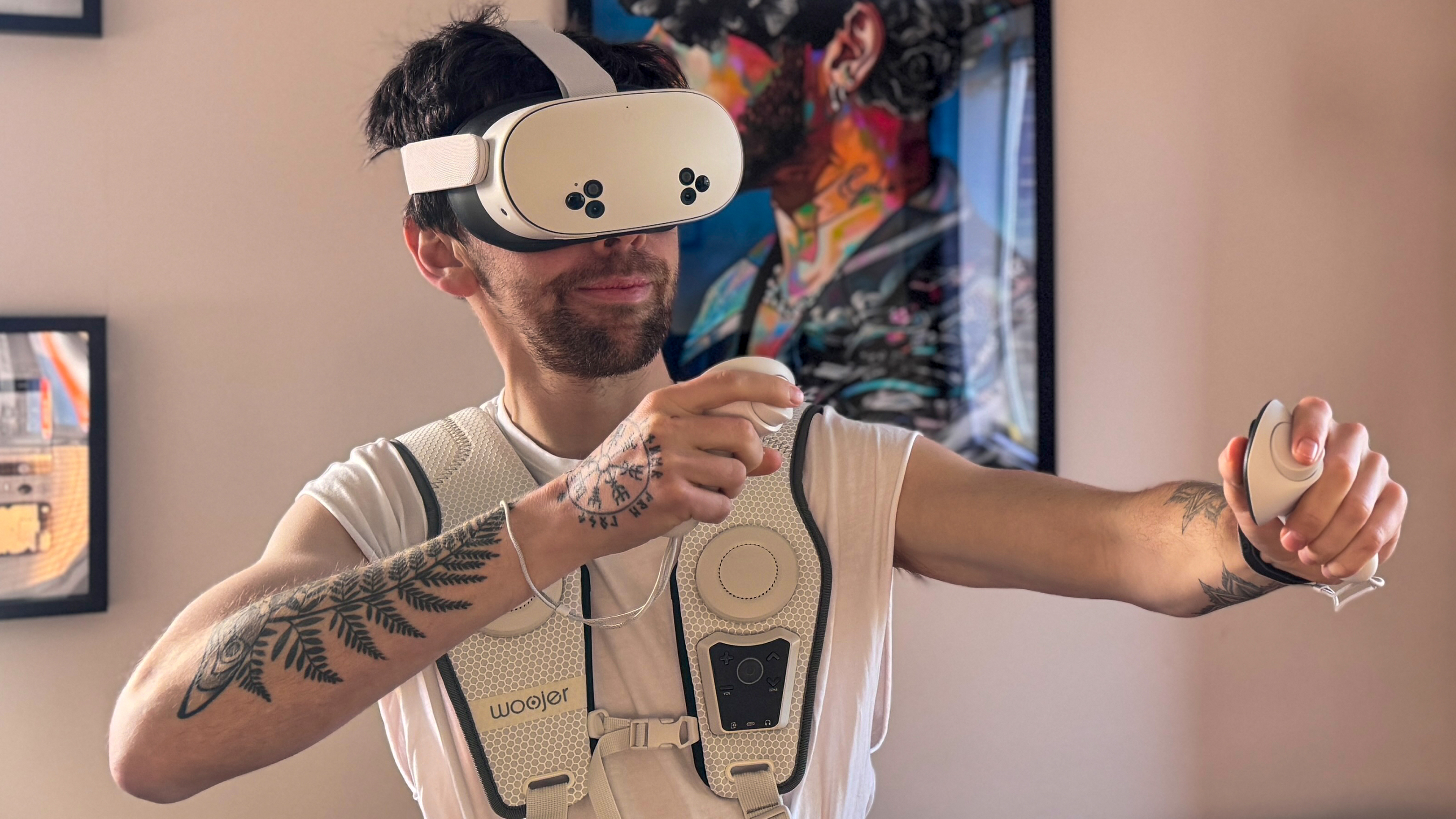
Looking to try mixed reality? We've got you covered on the best VR headsets around.
It's Samsung vs Apple, Android XR vs visionOS and headset vs headset in this all-out brawl to see which mixed-reality device will win. Let's dive into the specs and features that we know about the Samsung Galaxy XR and Apple Vision Pro M5.
Samsung Galaxy XR vs Apple Vision Pro M5: Specs
| Row 0 - Cell 0 | Samsung Galaxy XR headset (rumored) | Apple Vision Pro M5 |
Price | Around $1,800 | From $3,499 |
OS | Samsung One UI XR | VisionOS |
Processor | Qualcomm Snapdragon XR2+ Gen 2 | M5 and R1 |
Display | 4K micro-OLED (29 million pixels, 4,032 PPI, 90Hz) | micro-OLED (23 million pixels, 3,386 PPI, 90Hz, 96Hz, 100Hz, 120Hz) |
Storage | N/A | 256GB, 512GB, 1TB |
Camera | N/A | 6.5MP Stereoscopic 3D camera with spatial video and photo captures (18mm, f/2.0) |
Sensors | 6 front cameras, LED light, power connector, air vents, Light shields | 2 main cameras, 6 world-facing tracking cameras, 4 eye-tracking cameras, TrueDepth camera, LiDAR scanner, 4 inertial measurement units, flicker sensor, ambient light sensor |
Audio | Spatial audio, 2-way speakers | Spatial audio pods with dynamic head tracking, 6-mic array |
Wireless | N/A | Wi-Fi 6 and Bluetooth 5.3 |
Battery | Up to 2 hours of general use, 2.5 hours of video playback | 2.5 hours of general use, 3 hours video playback |
Controllers | 2 Galaxy XR controllers, 6 DoF, analog sticks, haptic feedback | N/A (compatible with PlayStation VR2 Sense controller and Logitech Muse) |
Weight | 18.2 ounces | 26.4–28.2 ounces |
Samsung Galaxy XR vs Apple Vision Pro M5: Price and availability
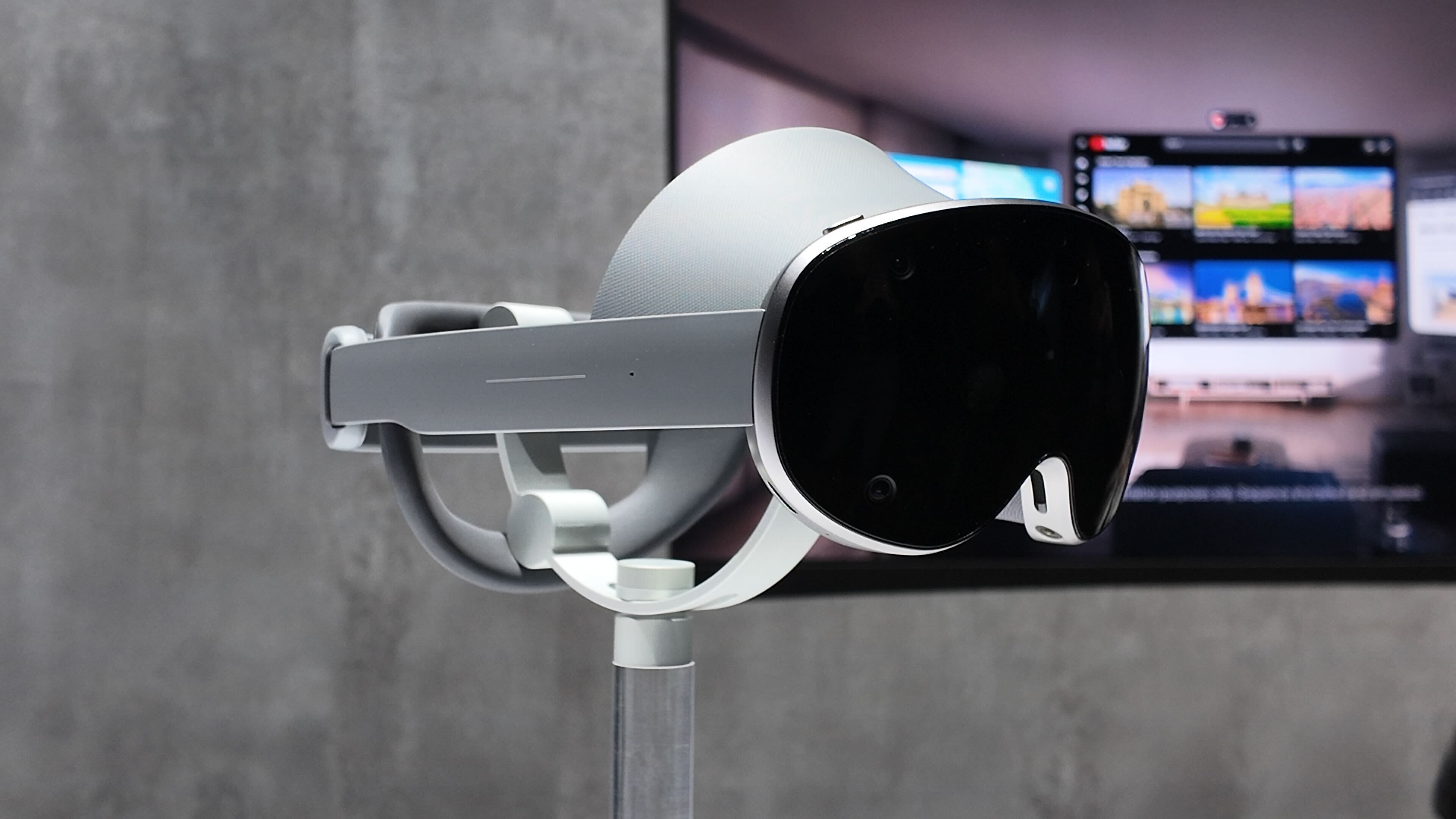
Price plays a major factor for the latest generation of mixed-reality headsets, and it appears Samsung may have the upper hand with the Galaxy XR.
While the cost of Samsung's upcoming Galaxy XR headset is still in question, we've heard that it could be priced between $1,800 and $2,900 USD, according to a Korean news outlet. Of course, we'd like to see it less than $2,000, but even at its higher-end rumored price, that beats Apple's latest headset.
The Apple Vision Pro with M5 starts at $3,499, which is exactly the same price as the first-gen Apple Vision Pro. While there is no price increase, it's still far more expensive than the speculated price of Samsung's XR headset.
Get instant access to breaking news, the hottest reviews, great deals and helpful tips.
Already, the Galaxy XR device looks to be a more cost-effective headset compared to the M5 Vision Pro, even if there's still a large gap between it and the most popular mixed-reality headsets around, the $499 Meta Quest 3 and $299 Quest 3S.
We'll find out more about Project Moohan's price and launch during the Samsung Galaxy Event taking place at 10 p.m. ET / 7 p.m PT on October 21. Otherwise, the Apple Vision Pro M5 is set to hit shelves on October 22, and is available to pre-order right now on Apple's website.
Samsung Galaxy XR vs Apple Vision Pro M5: Design
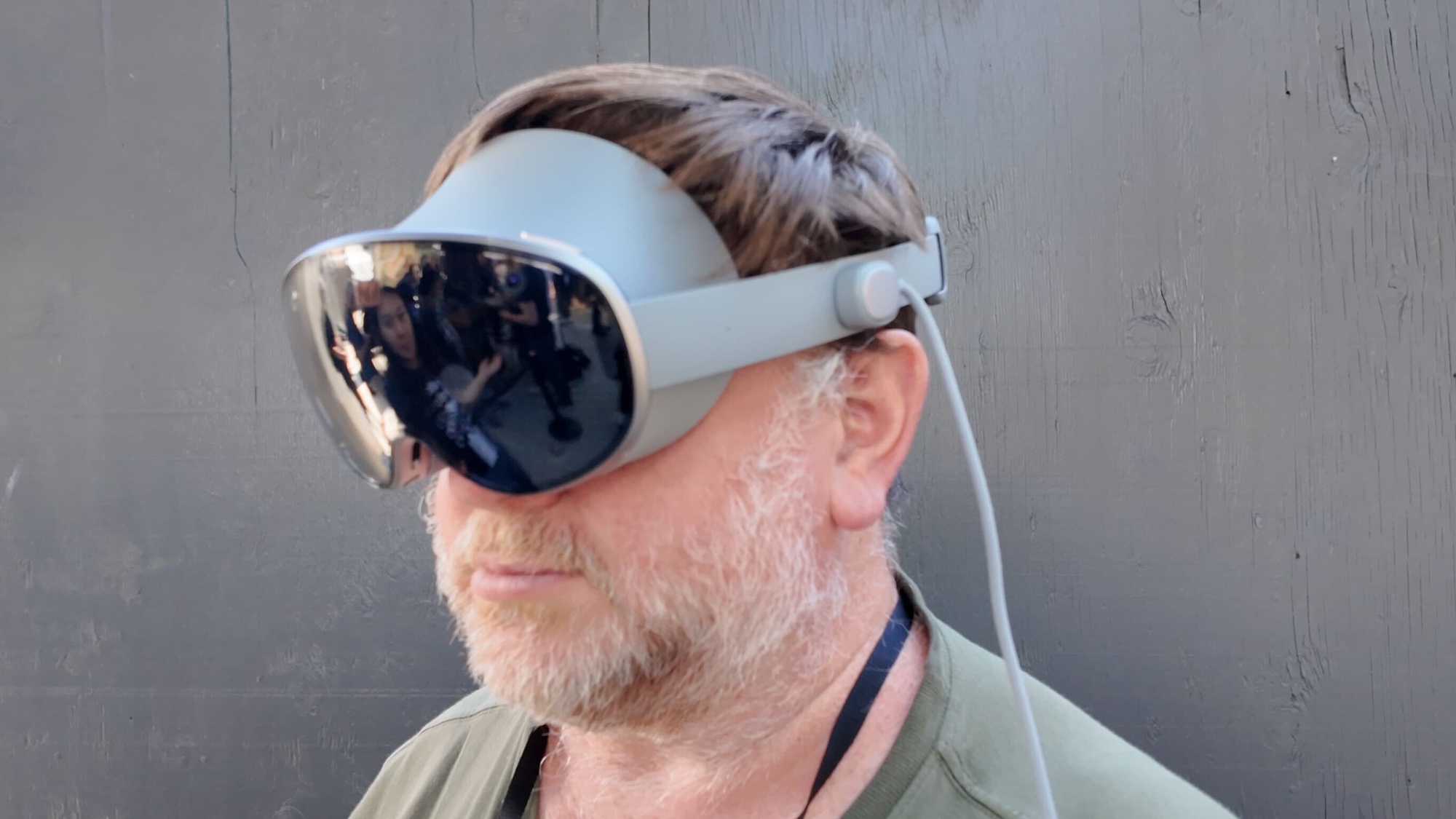
Right off the bat, the Galaxy XR headset shares a few things in common with the Apple Vision Pro. That includes the sleek, curved glass front panel and modular design, but with Project Moohan having more of a head visor to cover your forehead.
Samsung's headset also features light blockers to enclose the viewing area (these can be taken out), along with a strap equipped with an adjustable knob to tighten the fit — similar to the Meta Quest Elite Strap.
More importantly, however, Samsung's Galaxy XR headset is looking to be more of a lightweight device compared to the M5 Vision Pro. According to leaks, the headset is set to weigh 18.2 ounces. That's similar to the Meta Quest 3 (17.6 ounces), and we're thrilled with the comfort and feel of that.
On the other hand, the Apple Vision Pro M5 shares the same design as its predecessor, including the same Light Seal and Light Seal Cushion that attach magnetically to the device.
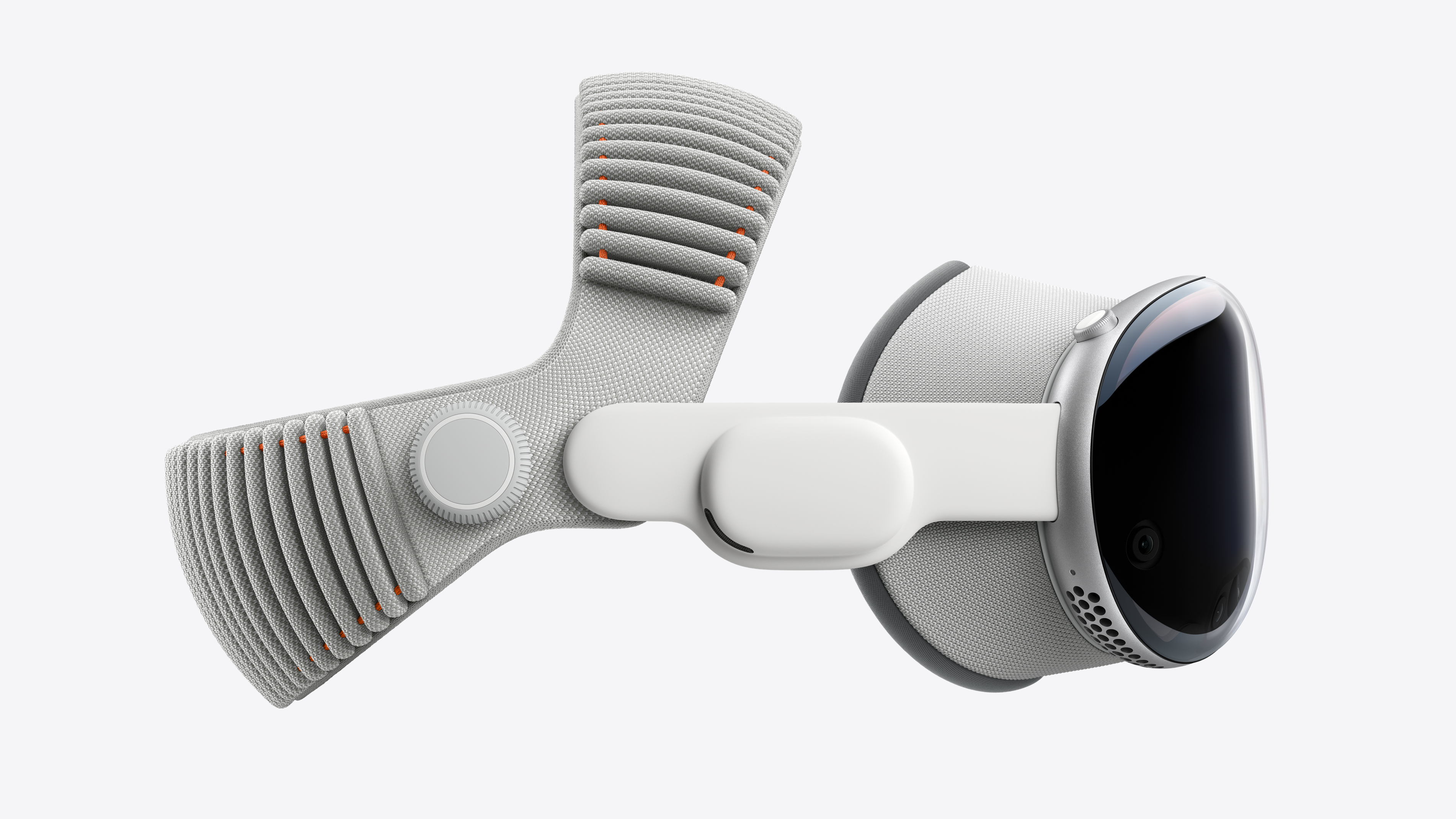
However, the latest headset weighs 26.4 to 28.2 ounces. That's heavier than the first Vision Pro (21.2 to 22.9 ounces), and considering that we felt the weight of Apple's mixed-reality headset during long periods, Samsung's Galaxy XR takes the advantage.
At least the Vision Pro M5 comes with an all-new Dual Knit Band, which features upper and lower straps that are 3D-knitted as a single piece to create a unique dual-rib structure. According to Apple, this provides cushioning, breathability and stretch, and it comes as standard for the new headset.
Samsung Galaxy XR vs Apple Vision Pro M5: Displays
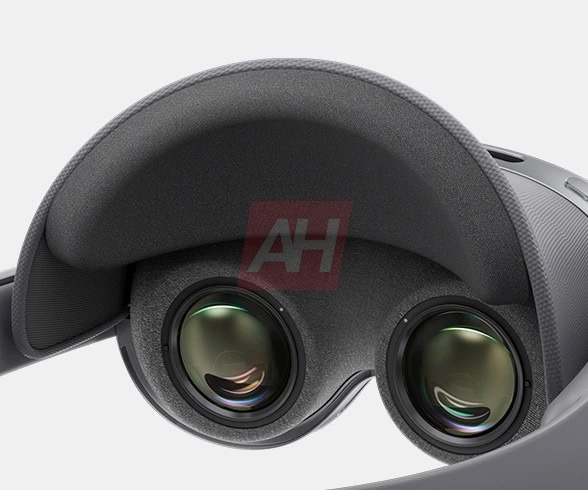
The Apple Vision Pro offers extreme detail in its visuals, thanks to its micro-OLED display that deliver 3,386 PPI (pixels per inch). With the M5 model, we'll now see frame rates at up to 120Hz, which means smoother visuals along with its super-realistic video pass-through.
Plus, the upgraded M5 model can render 10% more pixels on the custom micro-OLED displays compared to the previous generation. That means a sharper image with crisper text and more detailed visuals.
But Samsung's Galaxy XR headset is expected to boast a micro-OLED display with 4,032 PPI, delivering even greater image clarity over the Vision Pro. In fact, that's nearly 650 pixels per inch higher, which is an impressive feat considering how good Apple's headset handles on-screen visuals.
Project Moohan is also tipped to pack support for up to 4.3K resolution in each eye running at 90 frames per second (FPS). We'd like to see it go higher, seeing as the original Vision Pro could crack 100Hz, but either way, Samsung's XR headset should have incredible visual clarity, along with the seamless pass-through features of its rival.
Samsung Galaxy XR vs Apple Vision Pro M5: Navigation
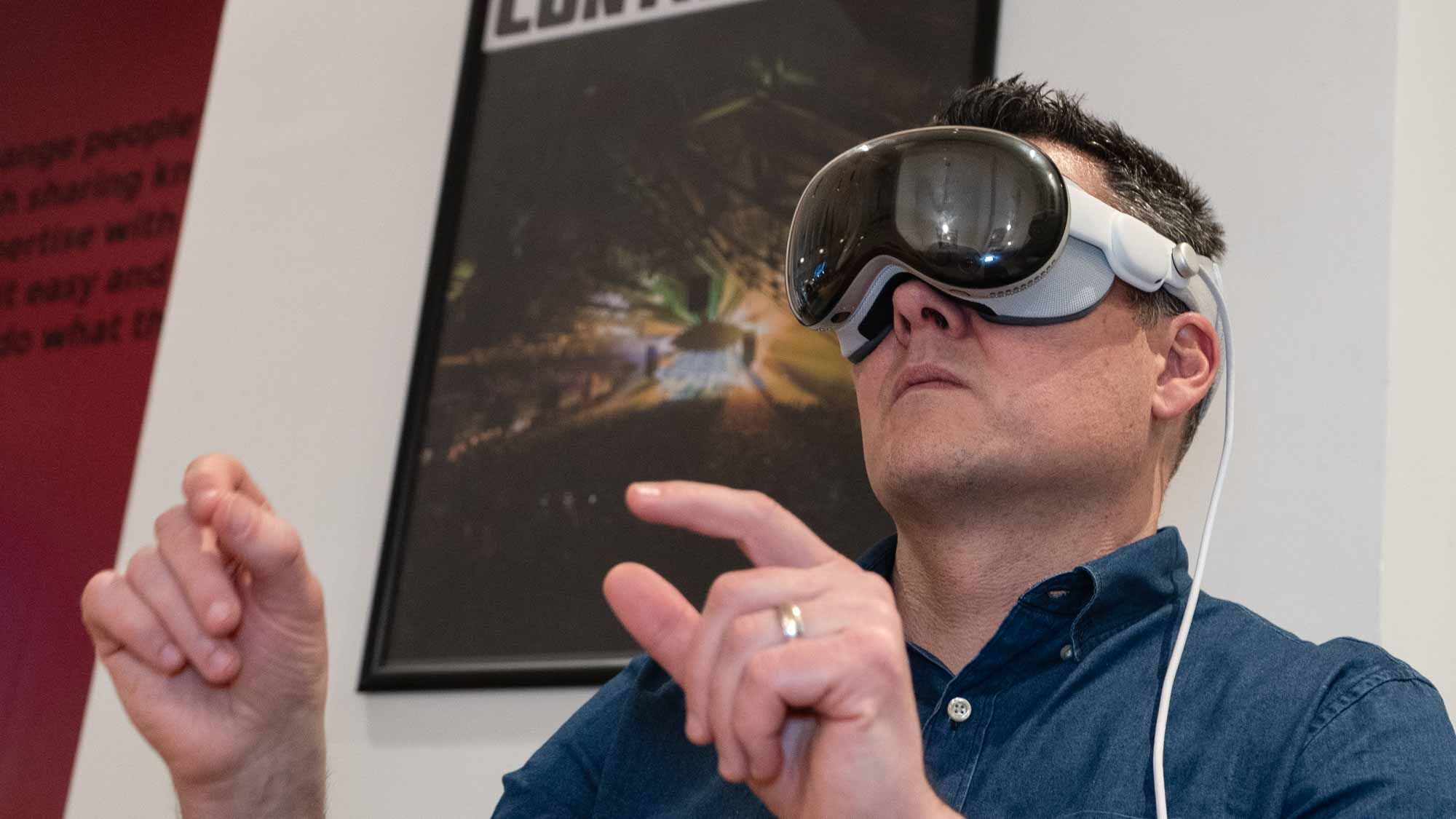
Both the Samsung Galaxy XR headset and Apple Vision Pro M5 can be used with hand gestures, such as using hands to scroll, pinching to select apps and more. Each headset is expected to work similarly, with hand-tracking that requires no need for controllers.
That said, reports have indicated that the Galaxy XR will come with two Galaxy XR controllers with 6 DoF and analog sticks, similar to the Meta Quest Touch controllers. If accurate, having the option to use controllers or just your hands is a big win, especially when playing VR/MR games.
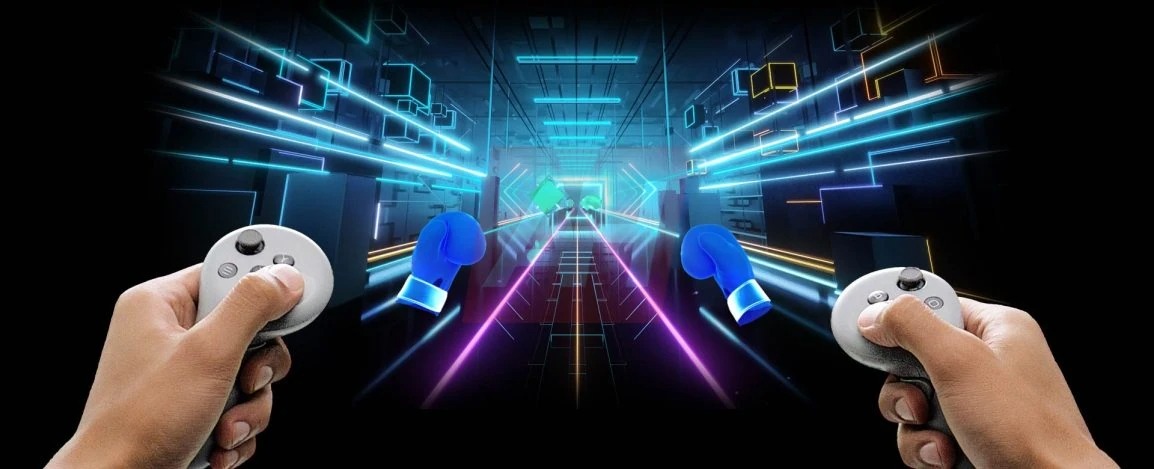
That doesn't mean the Apple Vision Pro M5 can't be used with controllers, as it supports PlayStation VR2 Sense controllers and the Logitech Muse digital pencil. But these controllers aren't included with the Vision Pro, so while they are options, it isn't necessarily an added benefit unless you invest in them.
Regardless, gestures are the main way to control these headsets, but Project Moohan having its own dedicated controllers will give it more ways to interact with apps and games. Hopefully, they come included as well.
Samsung Galaxy XR vs Apple Vision Pro M5: Performance
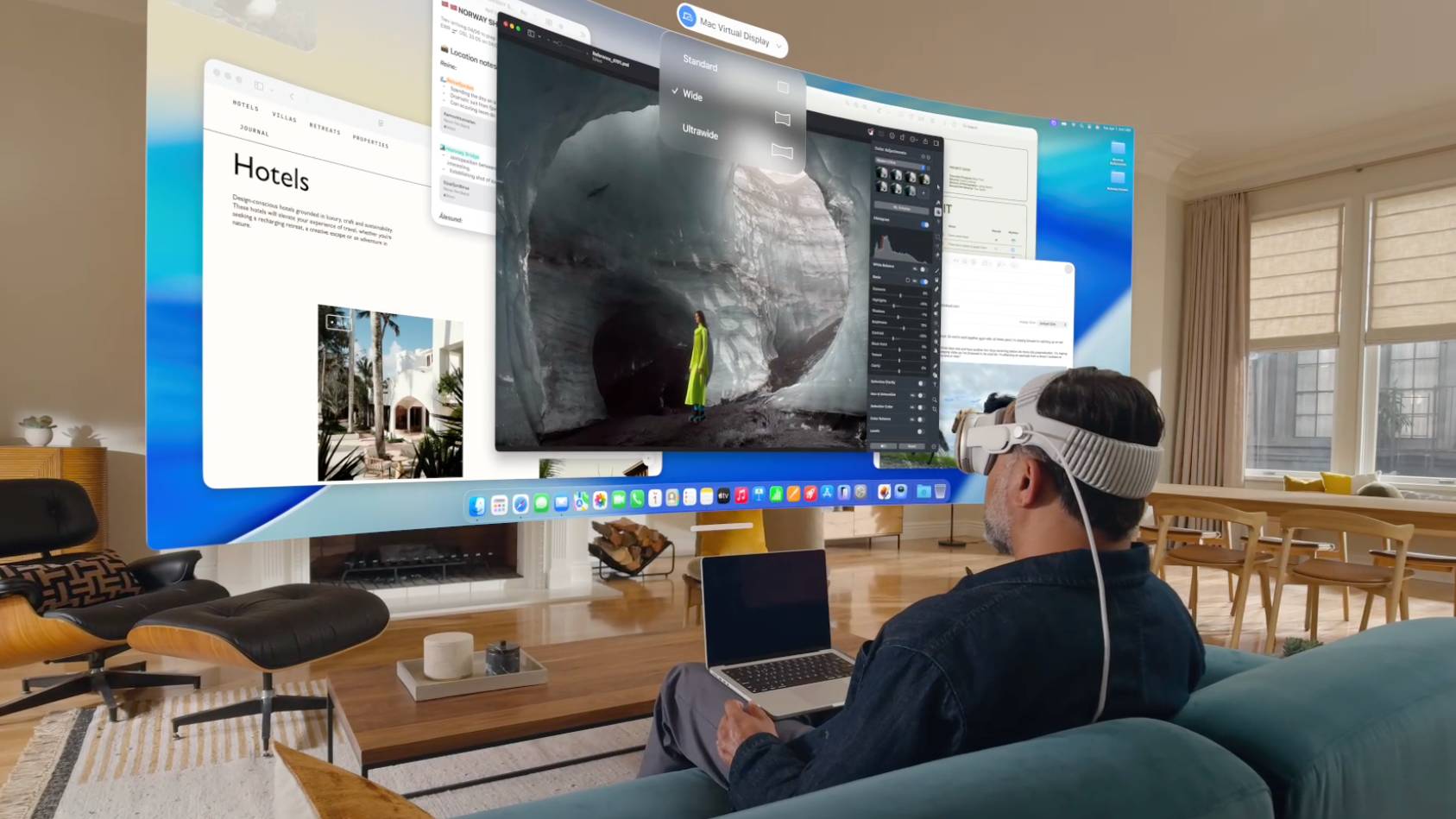
Apple's M-series chips chips power the best laptops and best tablets around, so it's hardly surprising that its M5 chip will see massive performance gains in its updated Vision Pro headset. But the Galaxy XR has Qualcomm on its side, as it's been tipped to feature a Snapdragon XR2 Plus Gen 2 processor.
To put that into perspective, the Meta Quest 3 and 3S come equipped with the Snapdragon XR2 Gen 2 chip, which offers enough power to play Batman: Arkham Shadow, Asgard's Wrath 2 and plenty more high-scale VR and MR games. with the "Plus" variant, we can expect an even bigger boost in performance.
For one, we can expect 15% increased GPU frequency and 20% increased CPU frequency compared to the XR2 Gen 2 chip. Moreover, it's set to support 12 concurrent cameras, just like the Vision Pro, and offer room-scale screens, life-size overlays and virtual desktops.
That's a good sign of the power to expect from the Galaxy XR headset. But the M5 chip is no slouch either.
With M5, boasting a 3nm architecture, a 10-core CPU and a 10-core GPU, we'll be getting greater hardware-accelerated ray tracing and mesh shading, even though the M2-equipped Vision Pro could already pull off some stunning details in apps and games.
The Apple M5 chip is poised to be stronger (we'll be doing lab tests to benchmark its performance), but considering the Snapdragon XR2 Plus Gen 2 is a step up from what's in the hugely popular Quest 3, there's a lot to look forward to from the Galaxy XR.
Samsung Galaxy XR vs Apple Vision Pro M5: OS
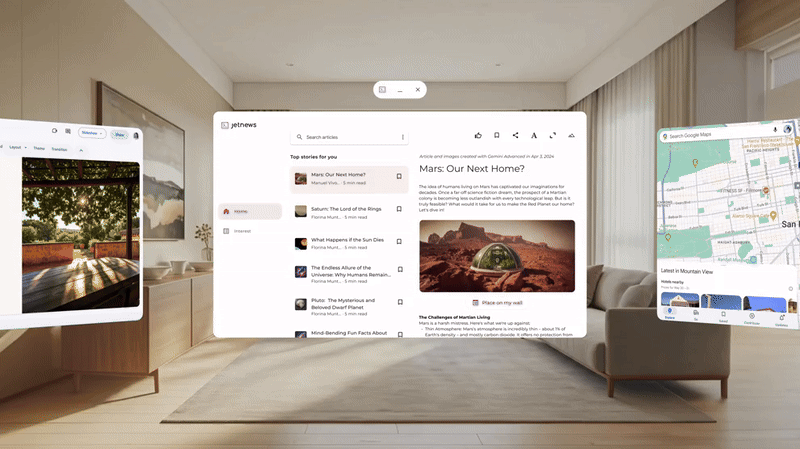
Android XR will take center stage with Galaxy XR, marking the first XR device to deliver Google's new operating system for mixed reality headsets. Interestingly, we expect it to come in Samsung's One UI aesthetic, with supported apps like Google Maps, YouTube, Netflix and Samsung's camera and photo gallery apps icons.
From what we've seen, Android XR is expected to deliver a more immersive experience in the apps we generally use on smartphones or tablets. For example, in YouTube, you should be able to watch 180- and 360-degree videos. There's also the ability to watch YouTube videos in 3D.
Another example is Google Photos, with images being able to be viewed in more depth, while in Google Maps, you can leap into an immersive view of a map and get a 3D bird's eye view of the area. Think of it as the apps your familiar with, but with an mixed-reality twist for more immersion.
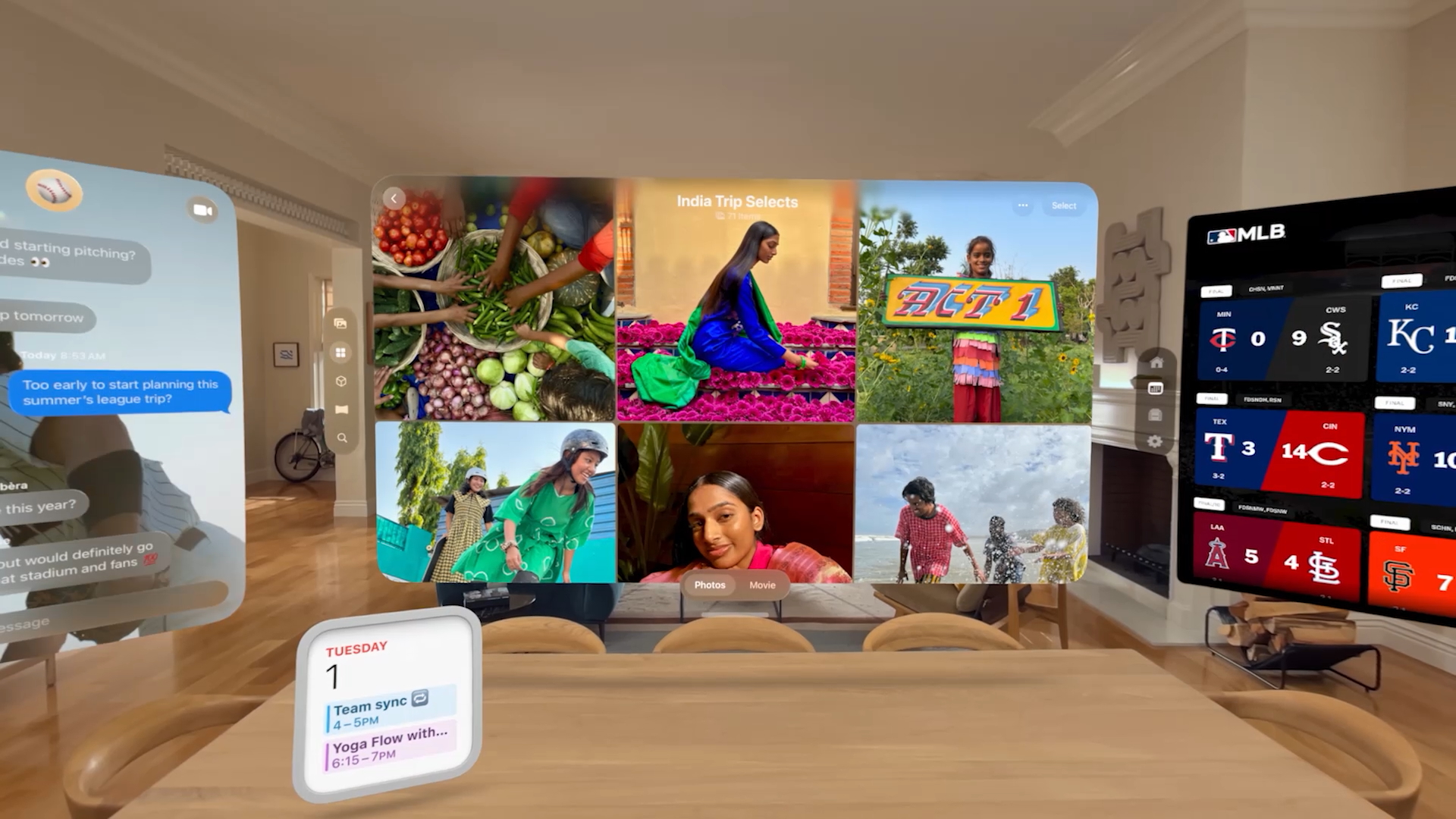
So far, this somewhat mimcs what visionOS 26 pulls off. That includes spatial photos for a 3D-like effect, 360-degree videos that you can jump into, shared AR experiences and more. The layout of visionOS is also similar to what you'd find on macOS, just with that XR influence.
Importantly, the M5 Vision Pro is primed for Apple Intelligence and Siri integration, although we still haven't seen the full effect of Apple's AI on most of its devices, seeing as it's behind it's competition. That leaves plenty of room to see what Google has up its sleeve.
Galaxy XR will fully integrate Gemini Live, and the AI-powered assistant is already looking to impress from what we've seen. On the Galaxy XR headset, it can be used to ask about anything with great results. For example, when Tom's Guide's Philip Michaels asked about the Arena Coleseo in Mexico City, it promptly brought up information, such as upcoming lucha libre matches were being held. Plus, when he asked Gemini, it even went to the YouTube app to bring up videos on these lucha libre matches
These operating systems are made for spatial computing, meaning you can bring up adjustable screens and working in documents, scroll through websites and check out apps all within the headset, and all with video pass-through. They're quite similar, but the latest visionOS does offer improved Personas, offering a (somewhat) realistic digital representation of the user during video calls (even though it still looks a tad jarring, personally).
In any case, it's looking like Android XR with its integrated Gemini AI will have a lot to show off, and may give visionOS some trouble considering the limitations of Apple Intelligence as of late.
Samsung Galaxy XR vs Apple Vision Pro M5: Battery
Battery can make or break an XR headset, even if it can be plugged into a power adapter to be used continuously. Being able to move around is nice, but you'll still be tethered to a cord with both of these headsets.
The M5 Vision Pro claims to have an improved 2.5 hours of battery life for general use, along with 3 hours of video playback. That said, expect to still carry around its battery pack to actually use it.
As for the Galaxy XR headset, it mirrors that first-gen Vision Pro, with up to 2 hours of general use, 2.5 hours of video playback. And leaked images show a battery being required at all times.
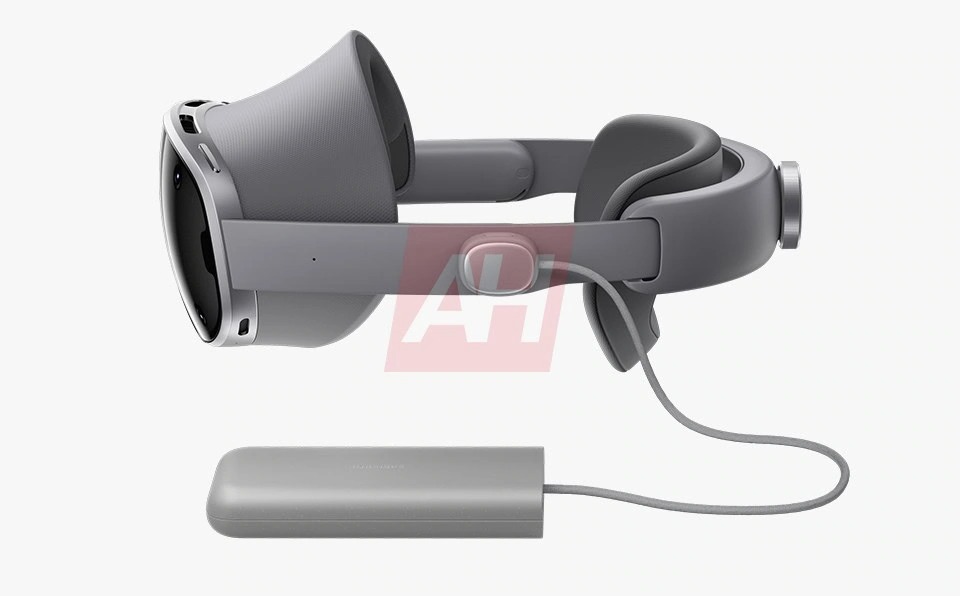
Of course, we'd have to test these out these claims ourselves, as different apps and usage can deliver various results. What's more, Qualcomm's Snapdragon XR2+ Gen 2 processor could bring better power efficiency to the Galaxy XR.
Samsung Galaxy XR vs Apple Vision Pro M5: Outlook
Samsung's Galaxy XR headset has been a long time coming. and given its expected price, specs and Android XR features, it looks like it could be a very strong Apple Vision Pro rival. The Gemini AI integration alone is a big differentiator for Samsung.
With its M5 update, the Apple Vision Pro offers improved performance, battery life and comfort, but its $3,499 price tag still leaves a lot to be desired. If Samsung's devicecomes in at its rumored price range, the Android XR-based headset should see a lot more interest.
Both headsets show just how far spatial computing has come, but it's clear Samsung's upcoming Galaxy XR headset is taking the fight to Apple, and it may just come out on top. Stay tuned for our full reviews.
Follow Tom's Guide on Google News and add us as a preferred source to get our up-to-date news, analysis, and reviews in your feeds. Make sure to click the Follow button!
More from Tom's Guide
- Apple Vision Pro is getting new 'immersive' content and it's putting people courtside at the Lakers
- I just went podracing in Star Wars: Beyond Victory — and it’s one of the most addictive mixed reality game I’ve ever played
- M5 Apple Vision Pro vs M2 Apple Vision Pro: All the biggest upgrades

Darragh is Tom’s Guide’s Computing Editor and is fascinated by all things bizarre in tech. His work can be seen in Laptop Mag, Mashable, Android Police, Shortlist Dubai, Proton, theBit.nz, ReviewsFire and more. When he's not checking out the latest devices and all things computing, he can be found going for dreaded long runs, watching terrible shark movies and trying to find time to game
You must confirm your public display name before commenting
Please logout and then login again, you will then be prompted to enter your display name.
